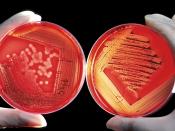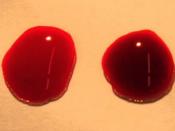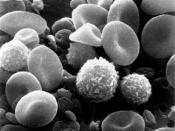Anemia is not a disease, but a sign that the body has some sort of problem with its red blood cells (RBCs). If a person's blood does not have the right amount of red blood cells or hemoglobin, anemia can develop. Anemia is defined as a decrease in the circulating red blood cell mass and an equal decrease in the oxygen carrying capacity of the blood (also known as hemoglobin). There are many types of anemia that are grouped by their underlying cause. To determine which type, doctors describe color, size, and shape of red blood cells. Treating it has to be specific for each type, which means treating the underlying disease.
There are three main types of anemia. Anemia caused by blood loss, which includes accidents, surgery, or a burst blood vessel. In cases where blood loss is life threatening, a person can have a blood transfusion to
replace lost blood.
In less severe cases the body will slowly bring the blood volume and hemoglobin content back to
normal by itself. In fact, a person can lose two-thirds of his or her blood over a twenty-four hour period without
dying. The decreased production of RBCs is another type of anemia. It is also known as hypoplastic anemia, and different conditions can cause this type.
Iron deficiency is the most common one. More women than men have this type of anemia, because the primary cause is blood lost during menstruation. Eating too few iron-rich foods or not absorbing enough iron can make the problem worse. Folic-acid deficiency anemia's another nutritional type of anemia. Iron and folic acid and the vitamin B12 are necessary to make blood. Aplastic anemia is when the blood forming cells of the bone marrow are destroyed.
Hemolytic anemia is when red blood cells are...


